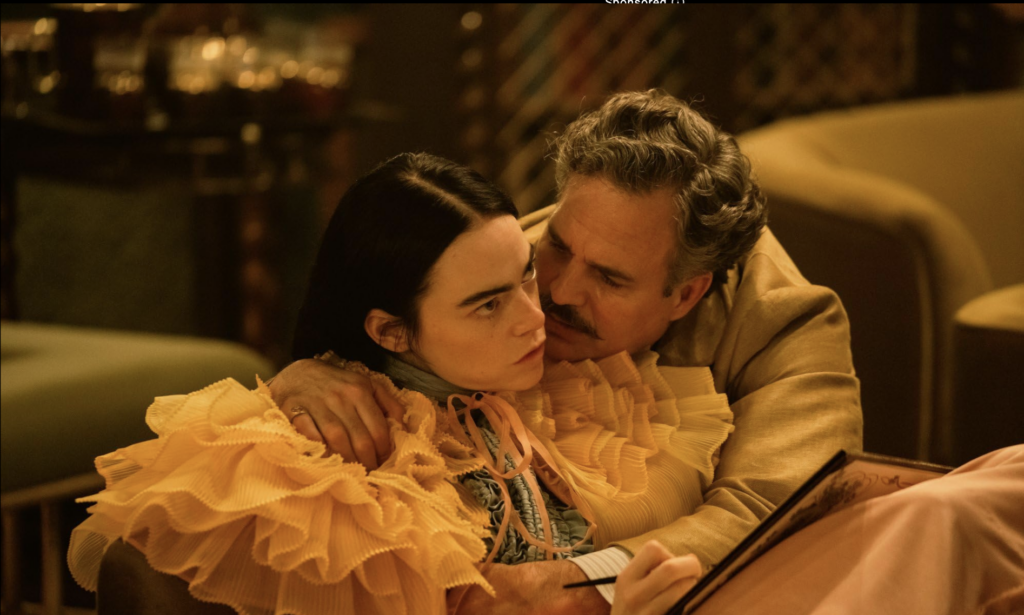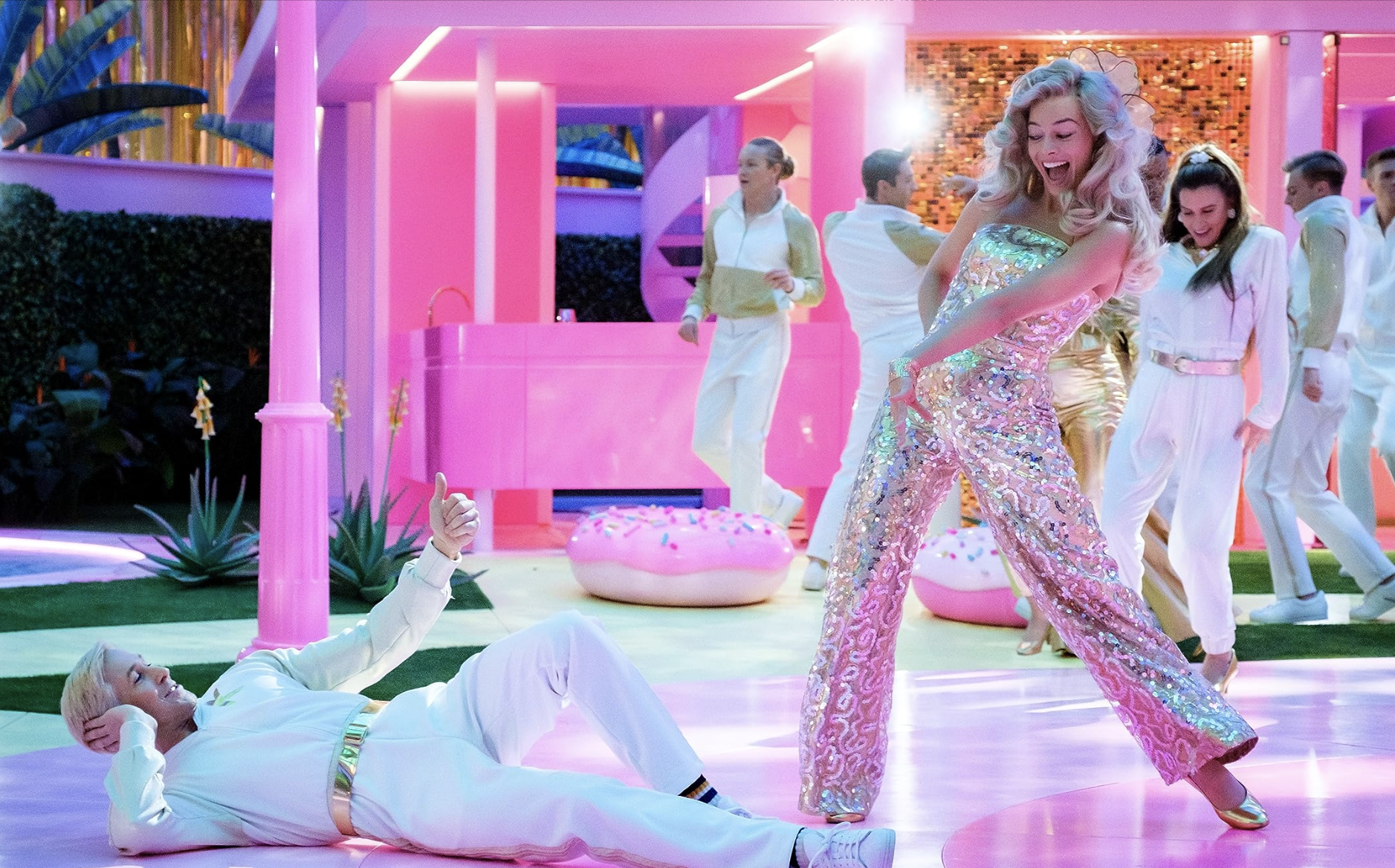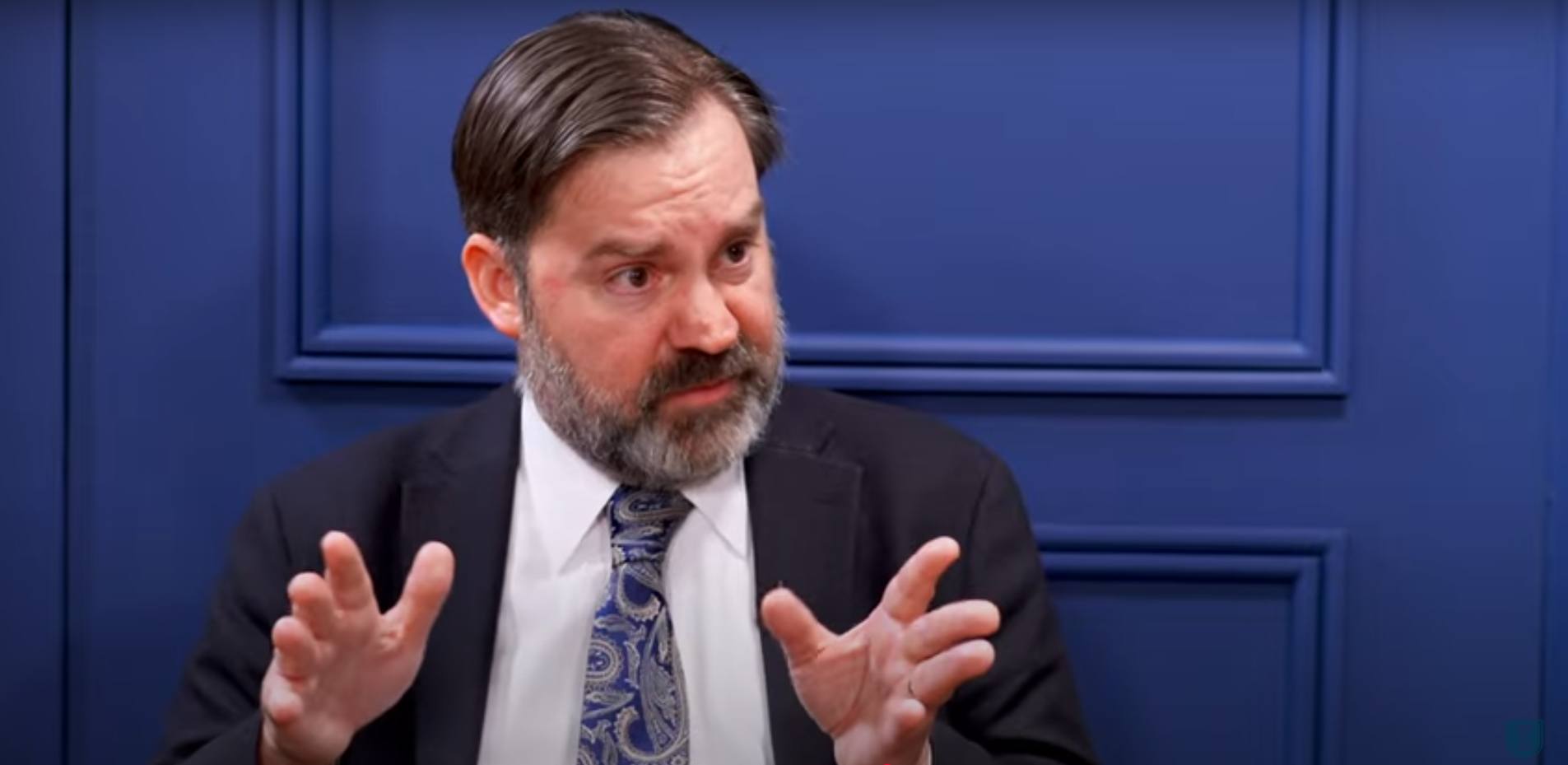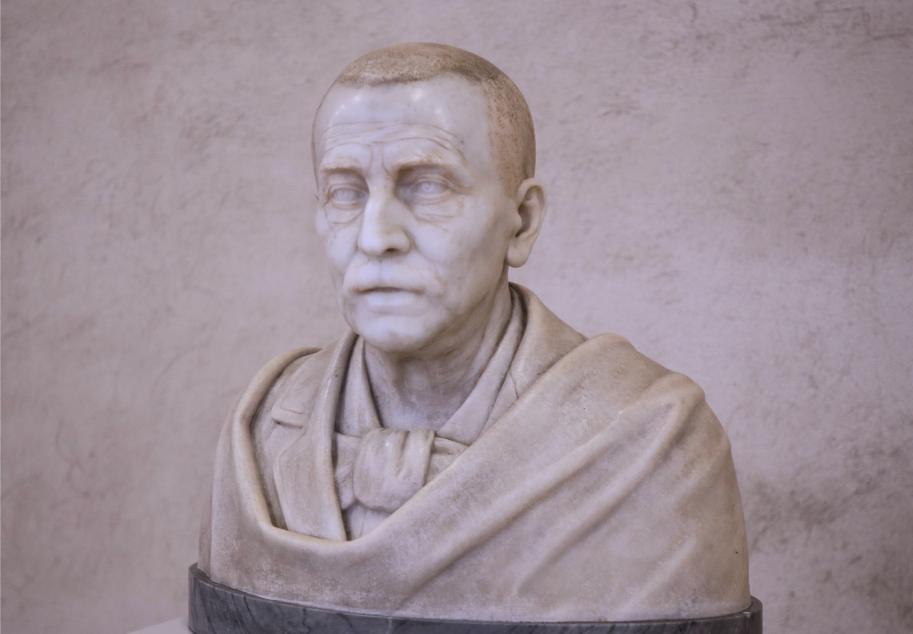“What makes a woman?”
This question isn’t precisely the one that has been agitating American society of late. When in her nomination hearings Senator Marsha Blackburn wanted to put now-Justice Ketanji Brown Jackson on the spot, she asked her for a “definition” of a woman, a question that, in a legal context, might have different answers in different contexts. The question is contested, though, not because of edge cases that make hard definitions difficult, but because of a deeper anxiety about identity, about what makes a woman. Are all women born to that estate? Is womanhood something that must be achieved? Or is it something women have thrust upon them?
Womanhood is not the only identity that prompts such questions; we ask them, regularly, about race, class, nationality, religion—indeed, about our humanity itself. Wherever we draw lines between this identity and that, inevitably we wonder how one winds up on this side of the line or that. And, in the modern era, we often ask these questions by means of fantasies of transformation. A book like The Island of Dr. Moreau, for example, forces us to confront the question of what makes us human beings rather than animals—but also the ways in which we ourselves have undergone a similar transformation, in our evolutionary history and in the process of acculturation to civilization.
As it happens, two of this year’s most prominent films are fantasies of just the same sort, both rooted in what one might call classic stories of modernity. One is a glossy and sanitized pop culture phenomenon, the highest-grossing film of 2023, hailed for breaking the cinematic glass ceiling. The other is a critical darling by a bad-boy auteur, lauded for bringing sex back to cinema. Both are tales of construction, transformation, and self-creation. And both are centered on the same question: what makes a woman?
The most important fact about Barbie, the movie, is that it has been a commercial juggernaut without recent precedent. It grossed more than $160 million in its opening weekend and to date has grossed over $635 million domestically and more than $800 million additional overseas. That makes it the eleventh-highest-grossing film domestically in history and the fourteenth-highest-grossing film worldwide (in both cases not adjusted for inflation). It was a bona fide event, something you had to go and see in a theater packed with other adoring fans wearing pink (which I dutifully wore myself; I even made pink cocktails for my wife and her friend afterward to celebrate).
Barbie achieved this overwhelming success while being obviously, forthrightly, and unequivocally aimed at a predominantly female audience, something historically understood in Hollywood to be an extremely dicey commercial proposition. I don’t normally pay much attention to box office numbers, since they have little or nothing to do with artistic interest. But when a work of art achieves such prominence against all expectations, it cries out for interpretation in cultural terms even if not in artistic ones. Why this movie? What nerve did it touch?
Barbie appears to be a story about the eponymous doll. It begins with a parody of the opening sequence of 2001: A Space Odyssey, with girls in frumpy long dresses playing with baby dolls suddenly visited by a gigantic Barbie doll (played by Margot Robbie) in her original swimsuit costume. As with the monolith in Stanley Kubrick’s film, Barbie has arrived to speed these girls along in their evolution. They will no longer be limited to role-playing a narrow form of adulthood, as mothers to their dolls. Now, the doll will be the grown-up woman, and by playing with her they will identify with her and come to a fuller understanding of the possibilities of womanhood. The girls smash their baby dolls as the apes did the skulls of their forebears, and the next thing we know we’re off to Barbieland.
What is Barbieland? It’s a place where all the Barbies live out every day as a perfect day. They never age, they never fall or falter, and a great many of them are defined by their self-actualizing professional careers: doctor, lawyer, even President of the United States. Robbie’s Barbie, the original—“stereotypical Barbie” as she calls herself—doesn’t have any such calling; her job is to just be Barbie, and to bask in the adoration of her boyfriend, Ken (Ryan Gosling), whose job, apart from adoring Barbie, is “beach.” Not lifeguard, just . . . beach.
This is a fantasy world of adult womanhood into which the daughters of the striving professional classes are indoctrinated, and the film is charmingly aware of its silliness while also delighting in the nostalgia of having been one of those daughters (as its director, Greta Gerwig, was). A joke early in the film points to a potential danger, though: Ken, Barbie’s boyfriend, asks to spend the night, and Barbie asks why. “Because we’re girlfriend and boyfriend,” he says. “To do what?” she asks. And Ken replies: “I’m actually not sure.” This is, in other words, an emphatically pre-sexual world, whose inhabitants are aware, in a vague way, of the heterosexual pair-bonding that adults will engage in, but have no idea why they are doing it.
There’s a suggestion that the intrusion of adult sexuality is what will destroy this world, but in fact Barbie is resolutely determined not to tread that particular path. Rather, the cracks that appear in Barbieland come from a very different aspect of adult womanhood. Barbie starts to have thoughts about death and starts to manifest signs of being mortal herself, no longer an unchanging synthetic ideal: she develops cellulite, her feet get flat, and she is no longer wafted effortlessly around by invisible hands to get from her dream house to her car (the dream house has no stairs). She wonders if she is starting to grow old—something she was never supposed to do—but she hasn’t ever actually grown up. To discover what is happening, and reverse it, she must go on a quest: a journey to the real world.
In the real world, she discovers the reason she has begun to change: Gloria (America Ferrera), an adult woman, has been playing with her and infecting her with her adult fears and troubles. Adult women, it seems, still need Barbie, but being needed in that way takes a serious toll on the toy. Meanwhile, Ken, who tags along on the journey, also learns something: that the real world is run by men—people who, in Barbieland, were created to be mere appendages to the Barbies in their lives. Barbie goes back to Barbieland with Gloria and her daughter, Sasha (Ariana Greenblatt), in tow to help her save it. But Ken gets there first and transforms it into a masculinist paradise, where the Barbies wear French maid outfits and fawn on the Kens while the Kens hang around their “mojo dojo casa” houses contemplating the awesomeness of horses.
There’s a lot of gleeful mockery of the overtly retrograde sexism of the manosphere, as well as the general idiocy of men, all deserving targets. But what was most striking to me about this vision of the corruption of Barbieland is not its sexism but its sexlessness. The Kens may have taken over, but they and the Barbies still don’t have the foggiest idea what they might have to do with one another. Ken still wants Barbie’s attention—but why? The corrupted Barbies now want to fawn over the Kens—but why? Ken’s transformation doesn’t transform the Barbies into sex slaves; it transforms them into simulacra of them, forms without content.
Is that true to the experience of prepubescent girls and boys? Perhaps. In our porn-saturated age, kids still don’t really understand what sex is, but they’ve usually seen quite a bit of it before they are ready to understand, and that does prompt a certain amount of confused playacting (playacting that can nonetheless become all too real). But it’s still deeply ironic that Barbie, a toy that was originally based on a German novelty sex doll named Lilli, not only doesn’t have any interest in sex but doesn’t seem to know what sex is.
What’s more notable, though, is that Gloria, who comes from the real world and has infected Barbie with her adult fears, doesn’t enlighten her either. Her much-quoted eleven o’clock number is a passionate rant about the impossibility of being a woman, which turns out to be the key to deprogramming the Barbies from their masculinist brainwashing. But it offers no explanation for why women might be vulnerable to male emotional demands, or, indeed, why Ken would be in Barbieland in the first place. It’s also striking in that regard that Gloria’s own husband is a completely useless appendage, that we have no view at all into the nature of her adult marriage. It’s more troubling still that Gloria’s daughter is largely an appendage as well; the director of Lady Bird surely knows how to portray a mother–daughter conflict, so the fact that Gerwig barely sketches one in here tells the audience something important about the nature of the project: that she’s primarily interested in peddling sentiments, ones that come prepackaged in a box just as surely as Barbie does.
Structurally, Barbie is a quest narrative. The hero’s quest, initially, is to save her home, but after accomplishing that Barbie questions whether it is truly home anymore. It turns out what she really needs is to become a real girl—or, since she’s fully grown, a real woman. That makes Barbie a variation on Pinocchio, but the wooden boy wanted to be real from the beginning (at least in Disney’s animated version of the tale) and had to earn that privilege by demonstrating courage, loyalty, and other virtues despite being easily distractible (as boys so often are). Barbie’s quest for most of the film has been the opposite: to avoid becoming real. It isn’t until the end of the film that she has her “aha” moment and reverses course. She gets her wish, symbolized by her first visit to a gynecologist—suggesting, for the first time, that being a woman has something to do with being embodied as one, that womanhood isn’t only a matter of either false or raised consciousness. But we never do find out what Barbieland’s enduring purpose might be or how Barbie’s journey toward real womanhood might connect with the journey that the entirely real girls who play with her must themselves undertake.
That actually could be the secret to the movie’s astonishing success. Before granting her wish to become real, her creator, Ruth (based on Barbie’s actual creator Ruth Handler, played by Rhea Perlman), asks Barbie to consider that people die, but ideas live forever. Barbie isn’t just an opportunity for women to nostalgically remember that magical time in girlhood when they could control their destinies simply by playing with dolls. It’s an opportunity for grown women to nostalgically remember a time when the questions that preoccupied feminism in the 1990s, when Gerwig was outgrowing her Barbies—like letting girls know they can aspire to any office or occupation and making the working world embrace their aspirations—were the only important ones. And the fantasy is that this vision of 1990s feminism is sufficiently plastic and gleaming to turn the hearts of the mothers to the daughters, and the hearts of the daughters to their mothers.
On the evidence of all those people sitting pretty in pink, it’s a fantasy with very broad appeal.
Poor Things, the latest film from the Greek director Yorgos Lanthimos, is Barbie’s doppelgänger, a twin that is also its opposite. If Barbie is a version of Pinocchio, Poor Things is, far more self-consciously, a version of Frankenstein, another modern fable of transformation and creation turned into a meditation on what makes a woman specifically. Like Barbie, Poor Things has been marketed as an explicitly feminist statement—but what precisely is meant by that designation should be seriously questioned.
The protagonist of Poor Things is Bella Baxter (Emma Stone). The first time we see Bella, she is greatly pregnant and jumping off a bridge into a river, committing suicide. We don’t know who she is yet, and when we meet her again she is considerably changed: apparently brain-damaged, moving jerkily and wetting herself and in general behaving like a toddler in a grown woman’s body. Which, as it turns out, is exactly right. Dr. Godwin Baxter (Willem Dafoe), the Doctor Frankenstein character of the story, who is so criss-crossed with scars that he looks like he himself was assembled of spare parts, fished her out of the river, cut the baby out of her belly—then removed the brain from the child’s skull, implanted it in the woman’s skull, and used the electric resurrectionist skills of his trade to give his creation life.
We learn this history from a conversation he has with his assistant, Max McCandles (Ramy Youssef), who has already fallen in love with Bella practically at first sight. McCandles is appalled, but Dr. Baxter explains simply that it didn’t seem right to bring the adult woman back to life when she so clearly had intended to leave it. As for the baby, well, the obscene cruelties his own father inflicted on him demonstrated the worth and legitimacy of experiments on one’s offspring. How else would we learn what it would be like to mature, mentally, from infancy to adulthood in an already mature female body?
The fantasy is in certain ways extremely similar to the one in Barbie. Barbie is an adult woman with the consciousness of a young girl; she is a toy for young girls to play with, onto which they can project their fantasies of adult womanhood. Bella, though, is a projection of entirely different fantasies, the creation of a man who imagines that he can thereby educate her to some kind of perfect womanhood. Exercising that fantasy requires absolute control, and the scenes where Dr. Baxter tries to maintain his tyranny by refusing to let Bella go outside recall the director’s earlier film Dogtooth (which I discussed in the Summer 2020 issue of this magazine), in which a father cuts his children off entirely from the outside world to raise them in a skewed alternate reality. It’s on the nose but not inappropriate that Bella abbreviates her creator’s first name as “God.”
And unlike Barbie, Poor Things focuses on sexual desire as the core meaning of its central character’s adult womanhood. When Bella discovers that she can give herself an orgasm with large phallic fruits and vegetables, she is delighted at her discovery and eager to show it off to all concerned. Bella has adult sexual desires and responses while still manifesting both a young child’s baseline selfishness and a child’s essential innocence about human relationships. That seems, in fact, to be what the experiment is all about, the implicit hope being that a woman of this sort will be better than one who comes to womanhood in the normal sequence of things. That hope is more explicit in the book on which the film is based; in the 1992 novel by Alasdair Gray, Dr. Baxter intends for Bella to be his ideal mate. In the film, he protests that his feelings are too paternal to ever be romantic (and anyway, his body is too ravaged to experience sexual arousal safely) and happily hands her over to McCandles’s gentle attentions. As in the book, however, Bella will not be so readily handed over, even to a man whom she is happy to say she loves and whom she promises to marry, as she does McCandles.
First, she will run off with a rogue of a lawyer named Duncan Wedderburn (Mark Ruffalo) who takes her on a whirlwind sexual romp across the continent of Europe, where she exhausts her lover physically and emotionally, refusing to understand either his inability to make love continuously or his jealousy when she wanders off in search of her own adventures while he is asleep. Bit by bit she learns about the complexity of the real world—that it contains enormous suffering as well as pleasure, suffering which she cannot simply relieve by personal generosity or well-wishing—while Wedderburn learns that he is no match for Bella in any way. She winds up in a French brothel, where she learns even more about the varieties of human sexual experience (and is introduced to socialism by a fellow prostitute), while Wedderburn winds up in a madhouse.

Finally, she returns home to Britain to be reunited with her dying surrogate father, from whom she hears her true origin story. She is horrified at what he did to her and her mother/child, and even more when she learns that while she was gone, Dr. Baxter missed her so much that he started another similar experiment (from which I presume that in the world of the film beautiful pregnant women routinely throw themselves off of bridges). But the new creation is far less capable than Bella, and Dr. Baxter has already tired of her by the time Bella returns. He has discovered that he cares for Bella as an individual, not just an experiment, and Bella ultimately concludes that she likes existing, so she can’t blame him too much for creating her.
She’s also tired of sex now, so she’s ready to marry McCandles, which she is about to do when her husband from before her suicide, Alfie Blessington (Christopher Abbott), interrupts the wedding to reclaim her. She goes along with him out of curiosity and learns that he is a lurid caricature of a tyrant—he’s a military officer who randomly brandishes his pistol at his own servants and (no less horribly but more plausibly) plans to subject his wife to a clitoridectomy to cure her of her sexual urges. So she contrives to knock him unconscious, drag him back to Dr. Baxter’s laboratory, and improve him by removing his brain and replacing it with that of a goat, after which everyone can live happily ever after.
It’s a fantasy, yes, something made as clear by Poor Things’s luxurious steampunk stylings as by Barbie’s DayGlo digital polyvinyl chloride. But what kind of a fantasy is it? A clue may be garnered from two important changes from the novel. First, the film has labored to surgically remove the story from its Victorian Glaswegian context and to dial its Victorian stylings up to eleven. Gray’s story is a fantasy, but it’s rooted in a deeply felt attachment to Glasgow and its history. It’s not incidental to that history that Gray shows us Bella Baxter not only becoming a doctor but an important—if sadly often unsuccessful—social reformer of her era. “Socialism” isn’t just a label for him; it’s a word with a past, and a place.
As significant, I think, are the ways in which Lanthimos has removed Gray’s early-1990s metafictional trappings. Gray’s novel presents itself as having been found rather than written; it’s a testimonial, presented as fact, by McCandles himself, telling the true history of the woman who became his wife. An introduction explains all this, including how the book was purportedly found. Within McCandles’s book, a large part of the story is told through letters, first from Wedderburn, describing his misadventures with Bella as he understood them, and then, more extensively, from Bella herself. These give us an inside view of her developing consciousness and conscience. Following McCandles’s book, Gray includes a letter purportedly from McCandles’s widow, now called Victoria, found with the book, denouncing it as an obvious tissue of nonsense and scurrilous slander patently derived from other people’s novels, denying that she was a monster or the creation of Dr. Godwin Baxter, and also denying that she ever truly loved her husband, averring that it was Godwin she loved all along. Finally, a series of footnotes by Gray bolster the case for the factuality of McCandles’s narrative against his wife’s denials and paint a picture of Dr. Victoria Baxter’s later years that is full of pathos, but considerably at odds with her own self-presentation in her letter.
This framing partly lets Gray have his cake and eat it too—he can tell his fantasy of a female Frankenstein who is also Galatea (the statue whom Pygmalion brings to life) but also (like Eliza Doolittle, the object of Henry Higgins’s own Pygmalion fantasy in George Bernard Shaw’s play) a feminist heroine, while acknowledging the peculiarity of his doing this as a man. Gray admits, in that sense, that he is no different from Dr. Godwin Baxter, Bella being the monster of their shared creation, both of them men conducting an experiment to see if they can create an ideal woman. (This is also a subtext in Mary Shelley’s novel: the monster is her creation even more than it is Dr. Frankenstein’s, pursuing her as it pursues him, stronger than her as it is stronger than him, and unkillable by either, to the point that it has seized his fictional creator’s very name and eclipsed that of its author.) Without this framing in the film, we’re left with Lanthimos’s naked ambition not merely to depict but to create a woman.
And naked is the right word. There is a great deal of sex in Poor Things the film, sex which is definitely taking place but is mostly alluded to rather than depicted in the novel, and to a considerable degree that sex is the central purpose of the film. If female sexual desire is the revolutionary force that Gray and Lanthimos both seem to think it is, then we should see that. But do we see it? The revolution, I mean. The sex certainly passes time pleasantly, much like the decor. But what is it for, beyond private pleasure? In Alasdair Gray’s novel, Victoria Baxter becomes, among other things, an evangelist for contraception, which is part and parcel of her, and Gray’s, larger vision for a healthier, happier, more egalitarian life, a vision that Victoria Baxter never saw come to fruition. We, on the other hand, are decades into the pornified aftermath of the still-contested sexual revolution, and at a moment when a masculinist reaction far more ferocious than Ken’s “mojo dojo casa” house movement seems to be growing in strength. How did that context inform Lanthimos’s film?
All I can say is that what I saw was anything but revolutionary. I saw an upper-class woman who, having lobotomized her brutal first husband and acquired a docile Ken doll for a second, can now comfortably live in her own cloistered little Barbieland. If that’s the end result of Dr. Baxter’s experiment, I have to count it as a failure.















